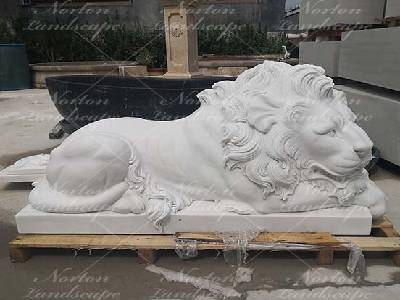Sculpture is a plastic art that uses certain material materials to create visible and tangible artistic images in a three-dimensional space. Sculpture is a general term for the three modeling techniques of carving, sculpting and carving. Carving and carving are chiseling and removing unnecessary parts on hard materials such as wood, stone, jade, bone, etc., leaving an artistic image; plastic is created by using soft materials such as yellow mud, ceramic mud, etc. Artistic image technique. Sculpture is one of the oldest art types in the history of human art. The physical bone carvings, clay sculptures, jade carvings, stone carvings, etc. excavated by archeology can be traced back to the Paleolithic age.
The form of sculpture can be roughly divided into three types: round sculpture, Relief Sculpture and open sculpture. Round sculpture is the most common form of sculpture. It does not have any background for decoration. It is a three-dimensional sculpture that can be appreciated from different angles and directions. Reliefs are generally compressed and have a specific background. They are usually attached to a flat surface and can only be appreciated from one or two sides. It can be divided into high relief, medium relief and low relief due to the different degree of protrusion. Openwork is between round and relief. It is formed by hollowing out the base of relief. It used to be used on doors, windows, railings and furniture.
The types of sculptures are classified according to the materials, which can be divided into wood carvings, stone carvings, bone carvings, root carvings, lacquer carvings, shell carvings, ice sculptures, clay sculptures, surface sculptures, pottery sculptures, plaster sculptures, etc.; according to their different functions, they can be divided into memorial sculptures and decorative sculptures. , Urban garden sculptures, religious sculptures, mausoleum sculptures, rack sculptures, etc.; from the perspective of performance, there are concrete sculptures and abstract sculptures. After entering the 20th century, with the development of society, the materials and expressions of sculpture have greatly expanded.

Bronze Sculptures
The aesthetic characteristics of sculpture can be summarized in four main points:
The charm of sculpture lies in the vitality that the artist gives to inanimate physical materials. Even the abstract shapes are full of rhythm and charm of life. What's more, since ancient times, the subjects of sculpture have been mainly animals and human bodies, especially human bodies. Famous Western sculptures such as Venus, Discus Thrower, David, Balzac, etc. are all human shapes. The artist's extraordinary craftsmanship awakens the life force sleeping in marble or bronze raw materials. In these masterpieces, the well-balanced and coordinated body proportions, the relaxed postures, the undulating fleshy texture, and the ready-to-see facial expressions, all condense the artist's thinking about human existence and destiny, and the respect and warmth of the glory of human nature. So as to give the connoisseur a great aesthetic enjoyment.
Sculpture art brings people not only a visual feast, it is also the only art form that can mobilize our sense of touch to participate in the appreciation of almost all art categories. The sense of touch can be said to be the most directly inspiring sense of life experience, which also enables the sense of life of sculpture art to be easily conveyed to the audience. No matter the surface of the sculpture is rough or delicate, it can be touched, coupled with visual induction, can arouse more artistic imagination of the viewer and produce a unique aesthetic effect.
Sculptures are static, but sculptors often choose those moments with the most tension and explosiveness to freeze them. For example, in "Discus Thrower", the athlete's ready-to-go posture, tight muscles, as if in an instant, the discus in his hand will fly far away. "Laocoon" vividly portrays the expressions of Laocoon and his sons being entangled by snakes and suffering. In his article "Laocoon", Lessing referred to the moment the sculptor's solidification was "the moment of gestation, which is the key to the sculptural art's movement. This moment connects the past and the future. The eternal rest also integrates the elements of time for the space art of sculpture. Sculpture has strong spatial expressive power, can be lyrical, can symbolize, because of its high generalization, it is often used as a department, a city, or even a country With the signs of the times.
The texture of physical materials is not only the medium through which sculptures are modeled, but they are also the means and language of sculpture modeling, which can have an important impact on the appearance, temperament and style of sculptures. Therefore, sculptors generally attach great importance to the beauty of materials. The wood is easy to divide and engrave, but it is perishable and not suitable for solemn monumental works; the dark and dark bronze color is suitable for expressing solemn historical themes; the grayish-white color of marble and the smooth surface are conducive to soft contours, especially suitable for human sculpture ; Jade is warm and clear, very precious, suitable for subjects with less materials. Western human sculptures mostly use marble. In addition to expressing the texture of the nude, its gray surface also psychologically inhibits the viewer's sexual awareness and sexual associations to a certain extent, thus strengthening the formal beauty of the work.
The company provides marble sculptures and Bronze Sculptures, please feel free to contact if necessary
Copyright:@2020-2021
Comments Please sign in or sign up to post.
0
0 of 500 characters used